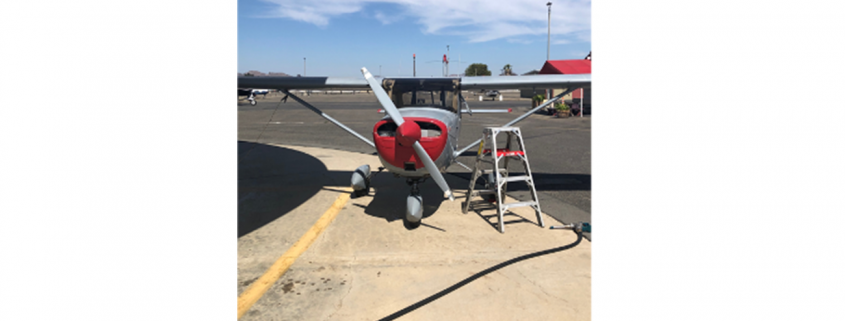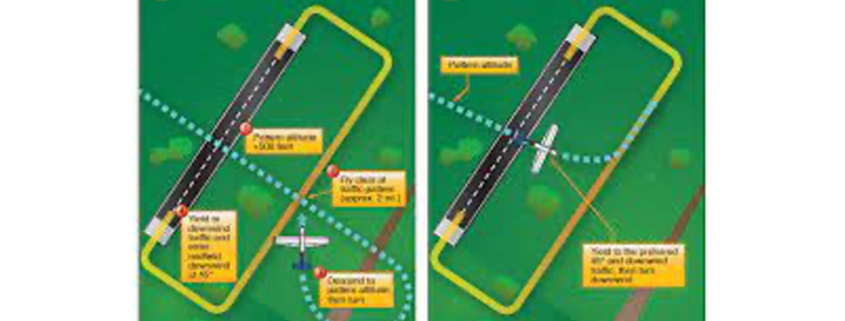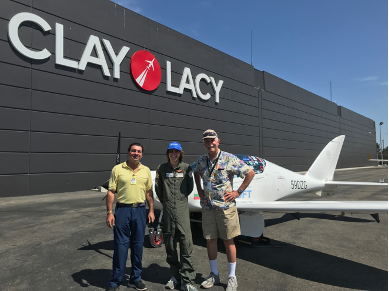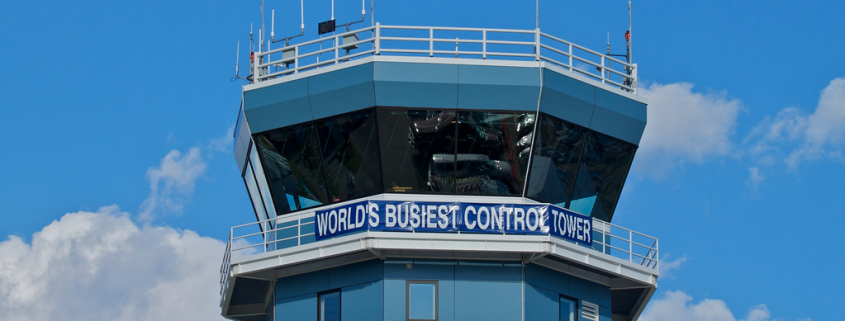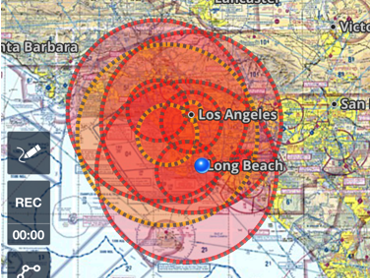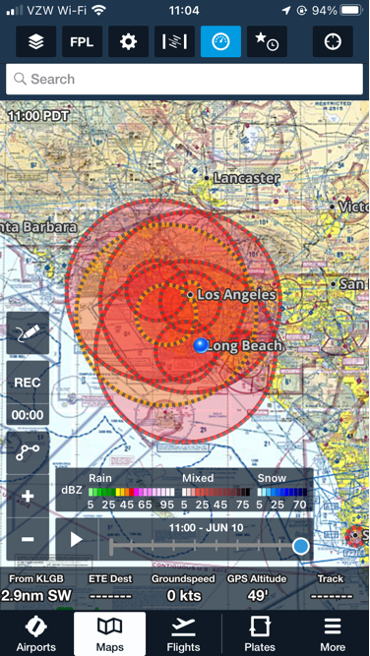Long Beach Airport Festival of Flight
/3 Comments/by John MahanyLong Beach Airport Festival of Flight is opened to the public annually
On Saturday, October 29, 2022, a portion of the west side of Long Beach Airport was opened to the public from 10am – 4pm, for the annual Long Beach Airport Festival of Flight. There were some airplanes on display, including my Cessna 150, which was one of several smaller aircraft being displayed.  There were also many exhibitors, though fewer than last year, including some airport businesses, food vendors and music. It is a family friendly event.
There were also many exhibitors, though fewer than last year, including some airport businesses, food vendors and music. It is a family friendly event.
This is a once-a-year event to allow anyone who is interested to see airplanes up close and ask questions. It is promoted on Facebook and Social-Media, as well as the local newspaper. The event organizers reached out to local businesses and were able to arrange for a UPS Boeing 757 cargo jet to be on display, along with several helicopters, and a US Coast Guard C-27 twin-turboprop, which is used for search and rescue.
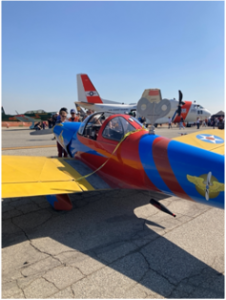 My Cessna 150 was a very popular attraction, once I opened the pilot’s door! Shortly after that, a line started to form, and for about 90 minutes, parents and their kids stood patiently in line waiting for a photo op with their children in the pilot’s seat, with a big grin on their faces! It almost resembled a line at Disneyland! Seriously. It was nice. I stood close by and watched carefully and answered a few questions that were asked about the airplane. The parents were very respectful of my airplane and the time, quickly taking pictures and keeping the line moving, thanking me as they moved on.
My Cessna 150 was a very popular attraction, once I opened the pilot’s door! Shortly after that, a line started to form, and for about 90 minutes, parents and their kids stood patiently in line waiting for a photo op with their children in the pilot’s seat, with a big grin on their faces! It almost resembled a line at Disneyland! Seriously. It was nice. I stood close by and watched carefully and answered a few questions that were asked about the airplane. The parents were very respectful of my airplane and the time, quickly taking pictures and keeping the line moving, thanking me as they moved on.
An event like this is really important now, as helps people get a better idea of what goes on at an airport, and the importance of aircraft and the many roles that they play in our world today. Many are simply not aware of this, aside from an occasional airline flight that they might take, or when they have something shipped vis FEDEX or UPS. Just the way it is now.
So perhaps this made a positive impression on some of the attendees, or on some youngsters, who might decide  to find out more about airplanes and perhaps consider aviation as a possible career choice. This also serves as good PR for the airport and the community in general, to make those who come out to see this, more aware of the airport and get a better idea what goes on. It’s better to be proactive, and build community support in advance, than reactive, after something happens, to try and educate people.
to find out more about airplanes and perhaps consider aviation as a possible career choice. This also serves as good PR for the airport and the community in general, to make those who come out to see this, more aware of the airport and get a better idea what goes on. It’s better to be proactive, and build community support in advance, than reactive, after something happens, to try and educate people.
And did you know that the Long Beach Airport provides 9% of the jobs in Long Beach and has an annual economic impact of $11 Billion? This has been reported in the Long Beach Business Journal.
Fly safely,
John
FAA approves use of (G100UL)
/by John Mahany100 octane unleaded fuel (G100UL) is now approved!
This is really BIG news for General Aviation aircraft owners. On September 1, 2022, the FAA signed the STC (Supplemental Type Certificate) that approves the use of 100-octane unleaded aviation fuel, or ‘avgas’ for all general aviation piston engine aircraft. There is much work yet to be done on this before it becomes widely available for use.
It has been a work in progress for many, many, years. During the early years of flying, several varieties of leaded av gas that were developed for piston engines of the era, especially for the larger engines that were later developed for use in WWII, requiring higher octane for combustion. But since the late 90’s, we have only had 100LL, or low lead. And lead is still required for high compression piston-engine airplanes to prevent ‘knocking’ and to enhance the quality rating of the fuel, which is necessary for the efficient combustion of fuel. This is all part of the chemical engineering.
This work has been spear-headed by GAMI, General Aviation Modifications, Inc, founded in 1994 and located in Ada, OK. The FAA’s approval of the use of GA100UL fuel in all piston engines has long been a goal, to find one fuel that is suitable for all piston engine aircraft in the general aviation fleet. The co-founder of GAMI, Engineer George Braly, has been hard at work on this for a long time.
The process will take time as we transition the entire general aviation fleet to using G100UL fuel. It also requires an infrastructure, which is not yet in place, to support this and distribute the fuel to the 1000’s of airports across the country.
The photo above that I took shows the process of getting ready to fuel my Cessna 150 at local airport via the self-serve fueling that is available. It’s a bit more involved that getting gas for your car at Costco or similar. You don’t ‘ground’ your car. We ‘ground’ the airplane to prevent the chance of a spark from static electricity starting a fire. 100LL is VERY volatile. Highly flammable. You don’t have to pull or drag a fuel hose 50’ or more to make sure you have enough hose to reach the filler cap for the tanks, which for most GA aircraft are in the wing. You don’t need a ladder to climb up on the wing. You get the idea.
If you are in need of any proficiency training to meet the FAA’s Wings requirements, please get in touch with me to schedule some training. I have experience flying many makes and models of aircraft.
Fly safely!
John
Tragic Mid-Air Collision
/by John MahanyTragically, on August 18, 2022, a mid-air collision occurred over the runway where two aircraft were attempting to land, at the same time, at Watsonville Airport, KWVI, in Watsonville, CA. Watsonville, is in Santa Cruz County, south of San Jose.
What Happened?
A single engine Cessna 152 was overtaken by a twin Cessna 340 over the runway. Two passengers were onboard the Cessna 340, and one person was in the Cessna 152. Apparently the 340 did not see the 152, in spite of numerous radio calls. Tragically, there were no survivors.
Procedures
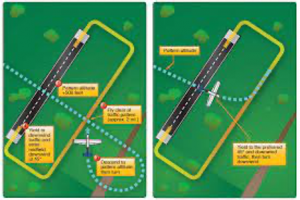 The FAA has an Advisory Circular, or AC, for short, for procedures to be followed by aircraft operating out of ‘non-towered’ airports, where there is no air traffic control tower in operation. It is AC 90-66B, entitled, Non-Towered Airport Flight Operations. These procedures have been in place for decades, since WWII, and are published for all to see.
The FAA has an Advisory Circular, or AC, for short, for procedures to be followed by aircraft operating out of ‘non-towered’ airports, where there is no air traffic control tower in operation. It is AC 90-66B, entitled, Non-Towered Airport Flight Operations. These procedures have been in place for decades, since WWII, and are published for all to see.
The FAA has also published information in the (AIM), or Aeronautical Information Manual, section 4-1-9, Non-Towered Airports. But it’s a matter of pilots following the procedures, and some get lax, as might have been the case here. Our thoughts and prayers go out to all involved in this tragic accident.
Lessons
There are lessons for all to be learned from this. Avoid ‘straight-in’ approaches when there are other aircraft in the traffic pattern. Also, fly the appropriate ‘pattern’ speed for the aircraft you are flying, so as to maintain appropriate spacing between aircraft. That clearly did not happen in this case.
If you are interested in doing any proficiency training in the aircraft you fly, for FAA Wings Credit, contact me. I would be happy to schedule time with you as my schedule permits.
Fly safely!
John
“Round-the-World” solo pilot visits the OC
/by John MahanyMeeting A Young Record-Setter
Belgian Pilot Mack Rutherford, 17, recently completed his RTW, record-setting ‘Round-the-World’ flight in his European built Shark, a single-engine high-performance ultra-light aircraft, with a cruise speed of nearly 300KM/hr, which is about 186 mph!
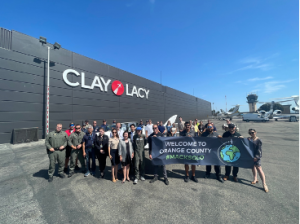
Mack left Sofia, Bulgaria, on his world-record solo attempt months ago on March 23, and arrived back in Sofia, Bulgaria, again on August 24, 2022. What a journey!
In 141 days, he landed in 52 countries, on 5 continents. Just Incredible. And he’s only 17! Two years ago, his sister, Zara, did the same thing, flying an ultra-light aircraft around the world, setting records in the process. Both parents are also pilots. Cheers to Mack Rutherford! What’s next for this young man?
I had the pleasure of meeting him in August. Here are two pictures taken on the ramp at John Wayne Airport when he stopped at KSNA for fuel and lunch at Clay Lacy Aviation.
Congratulations, Mack!
Flying low and slow across the country
/2 Comments/by John MahanyLots of Planning
 Last month, after lots of planning, starting in March, I flew my 2 seat Cessna 150 from Long Beach, California, ‘low and slow’, about 85 – 95 knots across the country to Oshkosh! It was awesome! Thirteen legs over four days getting there, twelve legs and three days, returning. I planned fuel stops roughly every 2 hours or about 200 miles, being conservative. I attended the world’s largest aviation gathering, or celebration if you prefer to call it that. Oshkosh is aviation ‘mecca’ for one week each year, normally the last week in July.
Last month, after lots of planning, starting in March, I flew my 2 seat Cessna 150 from Long Beach, California, ‘low and slow’, about 85 – 95 knots across the country to Oshkosh! It was awesome! Thirteen legs over four days getting there, twelve legs and three days, returning. I planned fuel stops roughly every 2 hours or about 200 miles, being conservative. I attended the world’s largest aviation gathering, or celebration if you prefer to call it that. Oshkosh is aviation ‘mecca’ for one week each year, normally the last week in July.
Almost 10,000 airplanes flew into Oshkosh for AirVenture
This year attendance was estimated at 650,000, with people traveling in from all over the world! But in spite of the large crowd, it is very well managed, and people are well behaved and respectful. The grounds are almost free of litter. Almost 10,000 airplanes flew into Oshkosh and were parked on the grounds at AirVenture. There really is nothing else like it.
After some unexpected delays, I was finally able to leave SoCal, early Wednesday morning, July 20. The weather cooperated, for the most part. There was one small ‘airmass’ thunderstorm, just east of Flagstaff, that was stationary, so I was able to safely deviate around it after takeoff. The density altitude was over 9,000’, and there was a headwind, and I was under gross weight. It took a longer takeoff roll to get airborne, but I was able to climb out, just slower than normal.
I spent Wednesday evening in Santa Fe, NM, at a Doubletree Hotel. The next day, Thursday, I had made it across ‘the heartland of America’, flying northeast across OK/KS/NE and landed in Lincoln, NE for the night. The nice folks at Duncan Aviation were able to arrange a room for me at a Marriott Courtyard Hotel downtown. The third day, Friday, I made it to Clinton, IA for the Cessna 150 fly-in and lunch there, and then tookoff in mid-afternoon and flew 1+20 northeast to Dodge County, WI for the night.
Planning is Key
 The next day, Saturday, the ‘mass arrival’ was planned, during the early afternoon, with just over 100 Cessna’s flying in formation, 35 ‘flights’ of three aircraft each, stretching out several miles. All coordinated with Oshkosh ATC, of course. See the image with ‘Xs’ for airplanes, at right, that illustrate this. It’s a very highly organized, well-planned, ‘arrival’. What a blast!! It took about 50 minutes for this flight…
The next day, Saturday, the ‘mass arrival’ was planned, during the early afternoon, with just over 100 Cessna’s flying in formation, 35 ‘flights’ of three aircraft each, stretching out several miles. All coordinated with Oshkosh ATC, of course. See the image with ‘Xs’ for airplanes, at right, that illustrate this. It’s a very highly organized, well-planned, ‘arrival’. What a blast!! It took about 50 minutes for this flight…
And then the weather moved in. A typical Wisconsin summer afternoon thunderstorm moved in on us at around 5 pm, with a torrential downpour and wind gust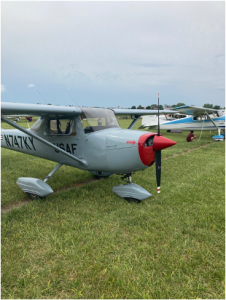 s up to 50 mph! It lasted over an hour. Some tents were blown down. It was a bad start to the week for some campers. Fortunately, I was staying in the dorms. For the rest of the week, the weather was excellent!
s up to 50 mph! It lasted over an hour. Some tents were blown down. It was a bad start to the week for some campers. Fortunately, I was staying in the dorms. For the rest of the week, the weather was excellent!
It was a very busy week in Oshkosh, each day packed with activities and things to see and do. And you simply cannot see it all, because so much is going on simultaneously all around you. And there are lots of friends and colleagues to connect with, as well, some of whom I only see once a year while there. I am also actively involved as a volunteer for two organizations, and this adds to it for me. This included breakfasts, lunches, and dinners with various organizations.
So after a crazy busy week, I had arranged to leave on Saturday morning, July 30, and 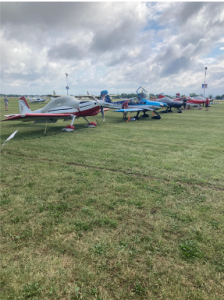 flew 90 minutes south and east to north suburban Chicago, to the same airport where I had learned to fly in 1977, after college. It’s still there, but now ‘rebranded’, like so many other things. The former ‘Pal-Waukee’ Airport is now renamed Chicago Executive Airport, because of the large presence of corporate jets that are now based there. It is a really nice facility.
flew 90 minutes south and east to north suburban Chicago, to the same airport where I had learned to fly in 1977, after college. It’s still there, but now ‘rebranded’, like so many other things. The former ‘Pal-Waukee’ Airport is now renamed Chicago Executive Airport, because of the large presence of corporate jets that are now based there. It is a really nice facility.
Weather, Good and Bad
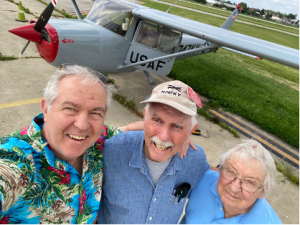 After a fun weekend visit with family, who wanted to hear all about my adventures so far, I delayed my departure on Monday morning because of early morning thunderstorms and the lingering adverse weather conditions that followed it. And one of my brothers drove my mother and I to the airport on Monday morning. So, they finally got to see my airplane! That was nice.
After a fun weekend visit with family, who wanted to hear all about my adventures so far, I delayed my departure on Monday morning because of early morning thunderstorms and the lingering adverse weather conditions that followed it. And one of my brothers drove my mother and I to the airport on Monday morning. So, they finally got to see my airplane! That was nice.
Then after hugs and goodbyes, I flew north for about 30 miles, staying low enough to avoid Chicago O’Hare’s Class ‘Bravo’ Airspace, though I did get ‘flight following’ from Chicago Approach (radar facility at KORD) which was very helpful, and then turned west to my first stop, Dubuque, IA, where the weather was much better! After getting fuel and lunch, I took off and continued southwest towards Des Moines, IA, for fuel, and then finally, Lincoln, NE, where I stopped for the night.
The next morning, I left Lincoln, taking off by 7:30am, and flew southwest to Salina, KS, then Dodge County, KS, Dalhart, TX and finally due west to Santa Fe, NM, for the night. And the airport restaurant in Dalhart, TX had closed before I arrived! Darn, no lunch! So, I continued to Santa Fe, about a 2 ½ hour flight, dealing with headwinds, turbulence and dodging some rain showers along the way. All of that is typical of this area. They were not threatening in any way. And Santa Fe was very nice!
 Finally, my 3rd day, I left Santa Fe early, then flew west to the small city of Gallup, NM. There a new fuel vendor was just starting in business, and there were a few things that weren’t ready. Like the credit card kiosk. After my credit card was declined several times, I went to their office and told them about this. They quickly took care of me, and I was able to get fuel and leave.
Finally, my 3rd day, I left Santa Fe early, then flew west to the small city of Gallup, NM. There a new fuel vendor was just starting in business, and there were a few things that weren’t ready. Like the credit card kiosk. After my credit card was declined several times, I went to their office and told them about this. They quickly took care of me, and I was able to get fuel and leave.
Next stop Winslow, AZ where the 100LL was $1.26 a gallon cheaper than at Flagstaff! So, I topped off in Winslow and headed for Lake Havasu City, over the mountainous terrain in northern Arizona. Just over 2 hours en route, I stopped there for fuel and lunch in the 105° heat. Ugh. I am no fan of the heat. But they have a nice on airport restaurant, Hangar 24, with indoor dining and of course it’s air conditioned!
After lunch, I took off and because of the hot sun shining through the ‘skylight’ windows overhead on my airplane  (only a few Cessna 150’s have them), both my iPad and iPhone soon overheated! Ugh. I turned both off and moved them out of the sun. I knew what heading to fly and headed south and west across the rugged, mountainous, southern California desert. It’s a harsh landscape! Especially in the summer heat! I’d hate to have a forced landing there because of engine problems.
(only a few Cessna 150’s have them), both my iPad and iPhone soon overheated! Ugh. I turned both off and moved them out of the sun. I knew what heading to fly and headed south and west across the rugged, mountainous, southern California desert. It’s a harsh landscape! Especially in the summer heat! I’d hate to have a forced landing there because of engine problems.
Finally, about 2 ½ hours later, again after fighting headwinds and turbulence, I arrived back in Long Beach! It was good to be back home, after two weeks traveling with my tiny Cessna 150. But it was quite an adventure!! No regrets.
There were lessons learned, and more….much to share, as well. Too much to write about, here, in more detail. I’m working on all of that, now. If you have questions or comments about any of this, please reply using the comments box…
Considering a long cross-country flight?
I am available for training, in your airplane, should you be in need of any FAA Wings Training for Credit. Also, if you are considering a longer cross-country flight, and have not done this before, please get in touch and I can provide some help with the planning and other considerations. There are many, depending on what you fly.
Especially concerning the weather. Many pilots are not comfortable with their understanding of weather, or lack thereof. I can help with this. Weather has long been an area of interest for me. I got ‘official’ weather briefings daily along my route. I’d call ‘Flight Service’, or ‘Leidos’ as they are now called, in the evening for an ‘outlook’ the next day, and then I’d call again in the morning before taking off to get a ‘standard’ weather briefing, and along the way I’d call and get an ’update’. The briefers did an excellent job. In addition, a friend had recently sold me his Garmin GDL-52 Sirius XM Aviation Weather receiver, that connects via Bluetooth to my ForeFlight iPad app, so I had real-time inflight weather info.
Also, I will be creating some quick reference materials that will be available in PDF format, containing some tips and lessons learned from this, that you will be able to download for a nominal fee.
Fly safely,
John
No Fly Zones
/1 Comment/by John MahanyBecause of the World Economic Forum Annual Gathering that was held in Los Angeles, June 6 – 10, 2022, the FAA implemented several TFR’s, (temporary flight restrictions), effectively creating ‘no fly zones’ for those of us flying smaller aircraft.
The President, VP, along with many dignitaries and world leaders were attending the Forum. It was a security nightmare, I am sure. Anytime there is an event like this, the DHS (Dept. of Homeland Security) collaborates with the Secret Service and the FAA to create and implement TFR’s, as needed. TFR’s can be implemented for any number of reasons, such as: when there are large forest fires, to keep transient aircraft out of an area to keep it clear for firefighting aircraft dropping water or retardant, also for major sporting events at stadiums, and to provide the required protection for Air Force 1 (AF1) and Air Force 2 (AF2), as a matter of national security. So, both AF1 and AF2, were out here, both at different airports, having brought both the President and the Vice President out here. Coincidently, VP Harris also has a home out here, in Brentwood, CA. She’s a regular visitor to SoCal.
So how does this affect us, as pilots? The inner rings are ‘no fly zones’ unless you are on an IFR flight plan, like the airlines. The outer rings allow some additional operations. The screenshot above from my ForeFlight iPad app, shows the many TFR’s, in red circles, and when you touch the screen on a particular TFR, it will then show the times and dates that each is in effect, along with other pertinent data. In this case, they are centered on LAX. The inner and outer ‘rings’ are circles of different diameters, typically 10, 20 or 30NM (nautical miles), and they may go up to 17,999’, or lower, depending on circumstances. Many smaller general aviation airports in the LA basin are also affected this week. This is the first time I have seen so many TFR’s that overlap like this.
Airline, corporate and military aircraft are not affected. They are on an IFR (instrument) flight plan, and ATC knows what they are doing, where they are going. When a TFR in created, the FAA issues a NOTAM (Notice to Airman), informing ALL pilots.
It’s the typical ‘private pilot’ who is most affected by‘no fly zones’, who doesn’t need to file a flight plan to fly from one airport to the next, in good weather. We are typically flying smaller propeller-driven aircraft. We cannot fly in the outer rings of the TFR unless we are transponder equipped and are in communication with ATC. Additional restrictions may apply.
We have restrictions placed on when and where we can or cannot fly, anyway, staying well clear of busy airline hubs like LAX, and keeping the ‘airspace’ clear, secure, or ‘sterile’ and allowing for arriving and departing jet traffic. As for myself, I am not flying my Cessna 150 this week with all of the TFR’s that are in effect. I’m not taking any chances!
And normally, 99.9% of the time, those of us flying ‘smaller’ general aviation aircraft, are compliant, we follow the rules and stay clear of these areas. We do not want to cause a problem. However, occasionally there is a problem, for whatever reason(s). Things happen. Usually, it’s accidental. When this happens, there are consequences.
Violators can be safely intercepted by the military or law enforcement, in flight, following well established protocols and procedures, and are directed to land. After landing, offending pilots are then apprehended by law enforcement, interrogated, and usually face violations, sometimes fines and possibly suspensions of their certificates, by the FAA, depending on the circumstances. This is serious stuff!
And, when warranted, the FAA arranges for remedial training, so the offending pilots do not make the same mistake, again. I know, because in years past, as a CFI working with the FAA in a volunteer capacity, I was one of the instructors who were selected to occasionally provide this remedial training to offending pilots. I was of course paid for my time. Most offending pilots were grateful for the opportunity to get additional the training and did not make the same mistake again.
So, avoid TFR’s, check NOTAMs before flight, and fly safely!
John


